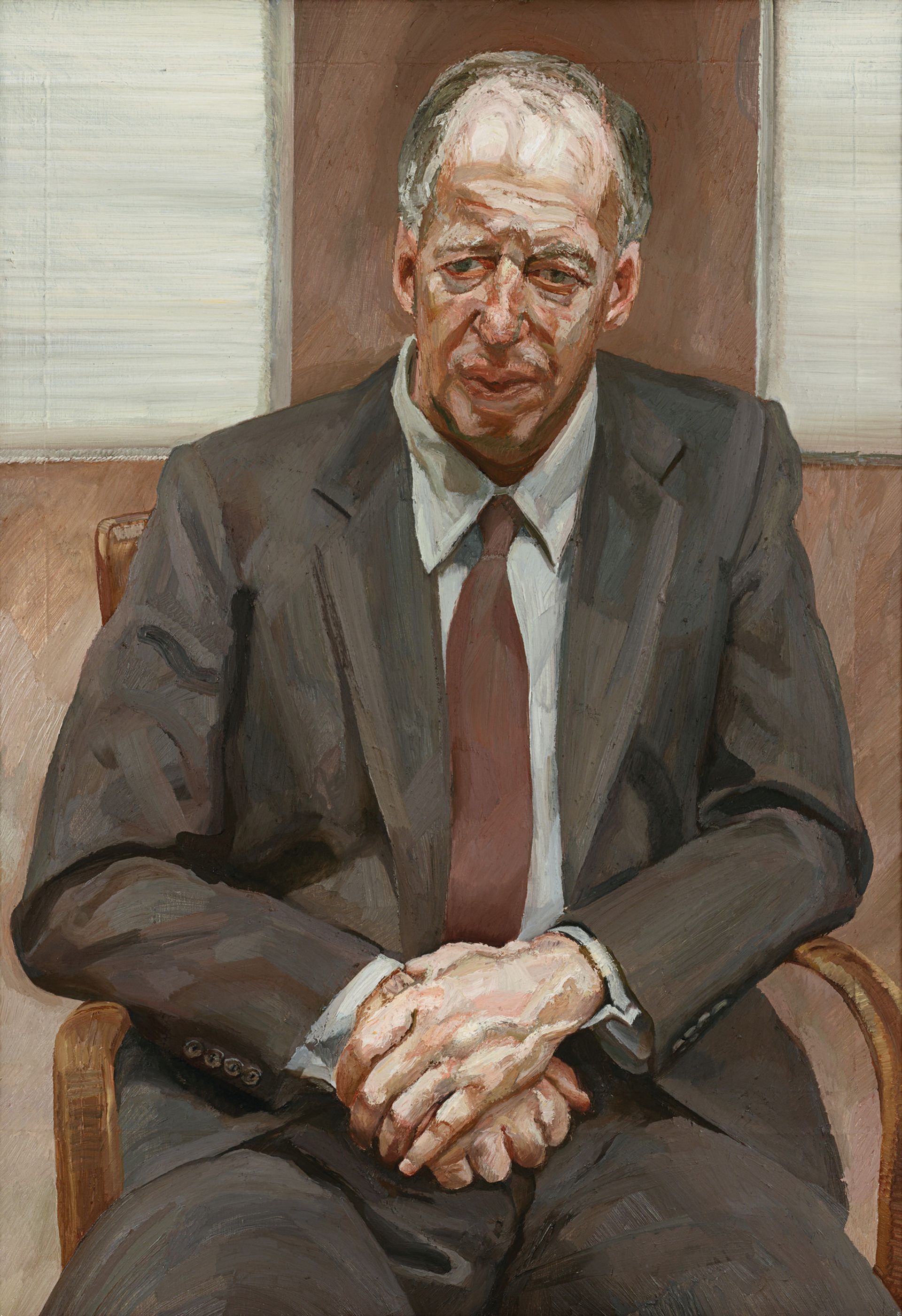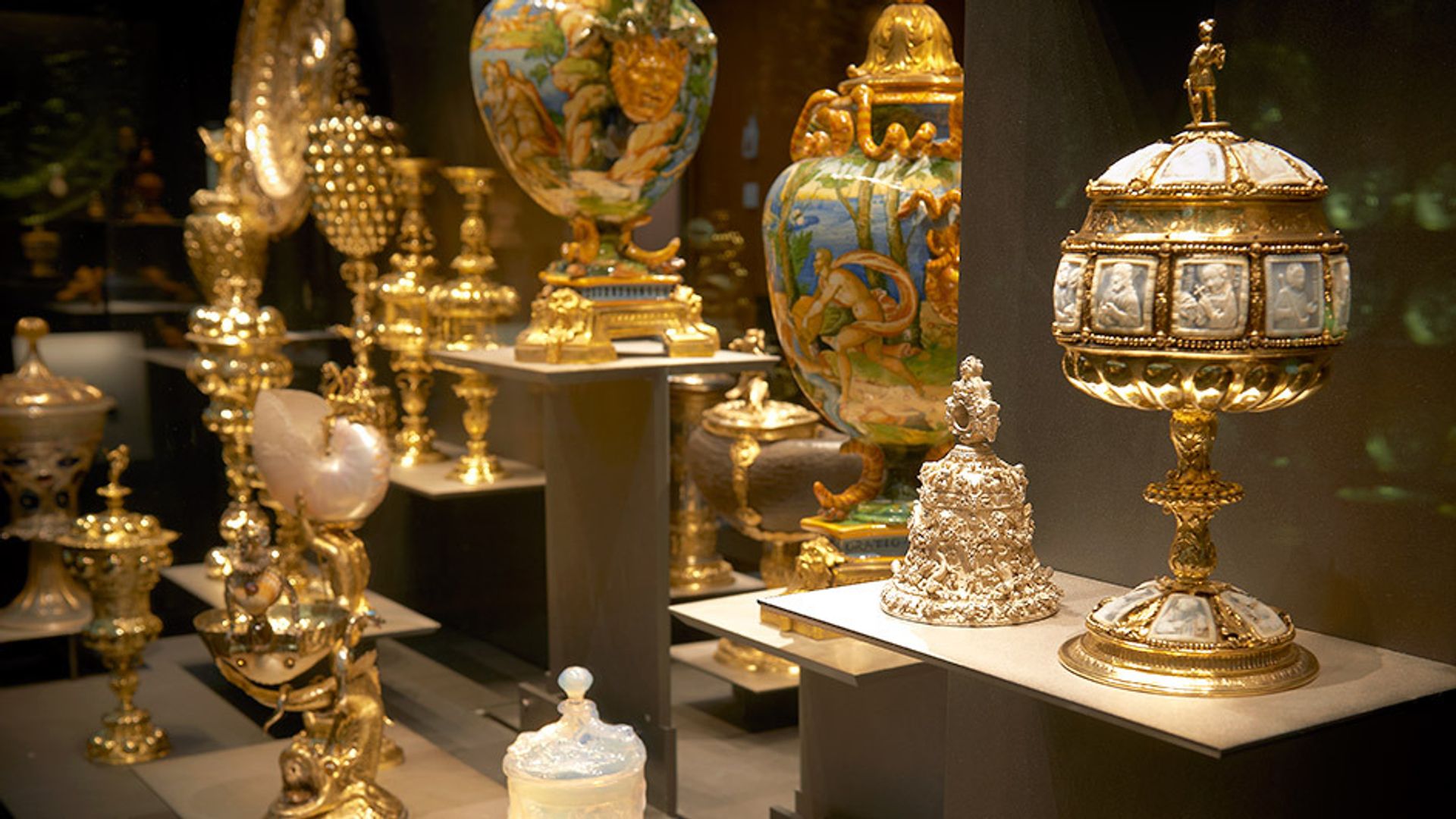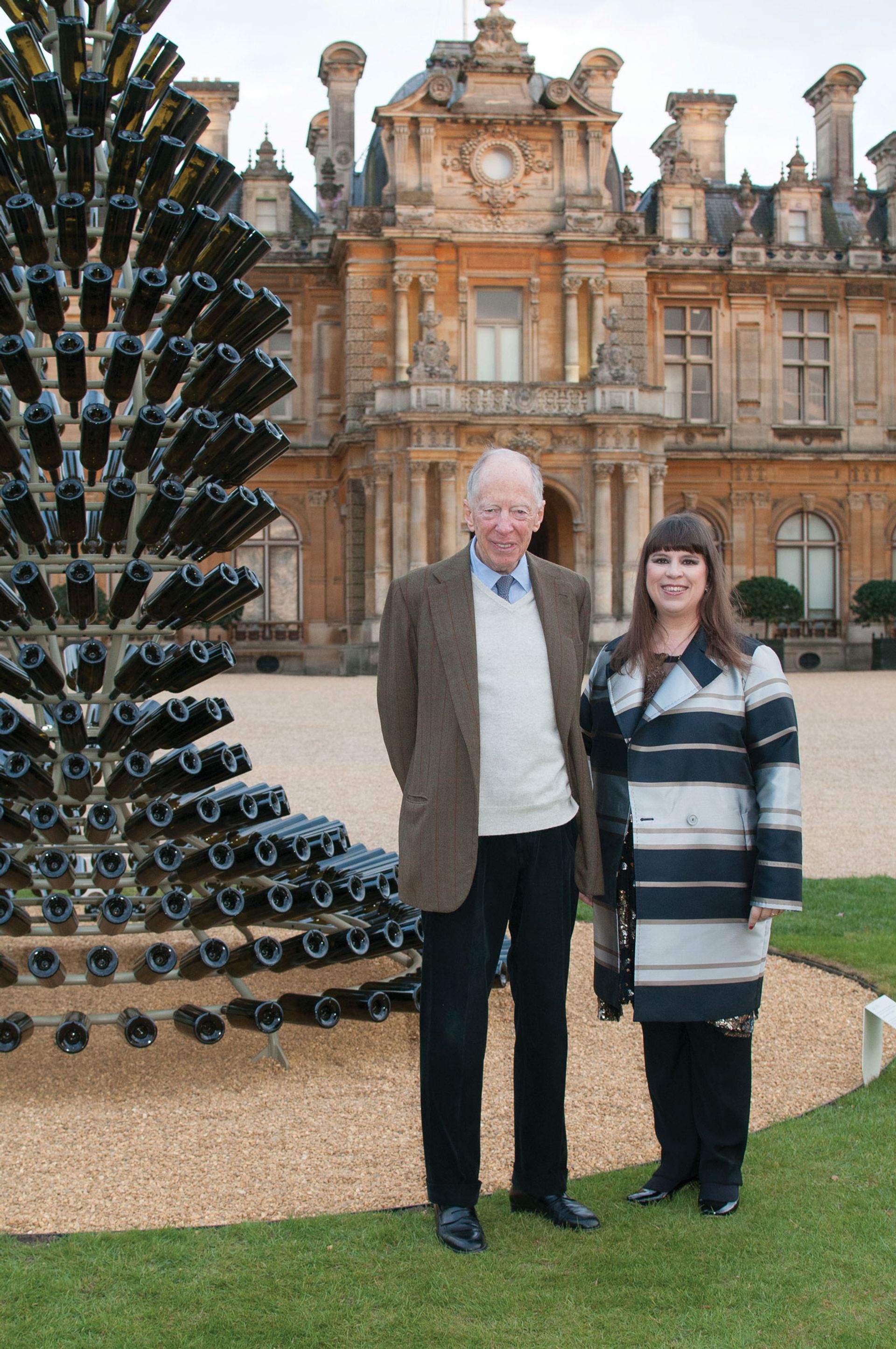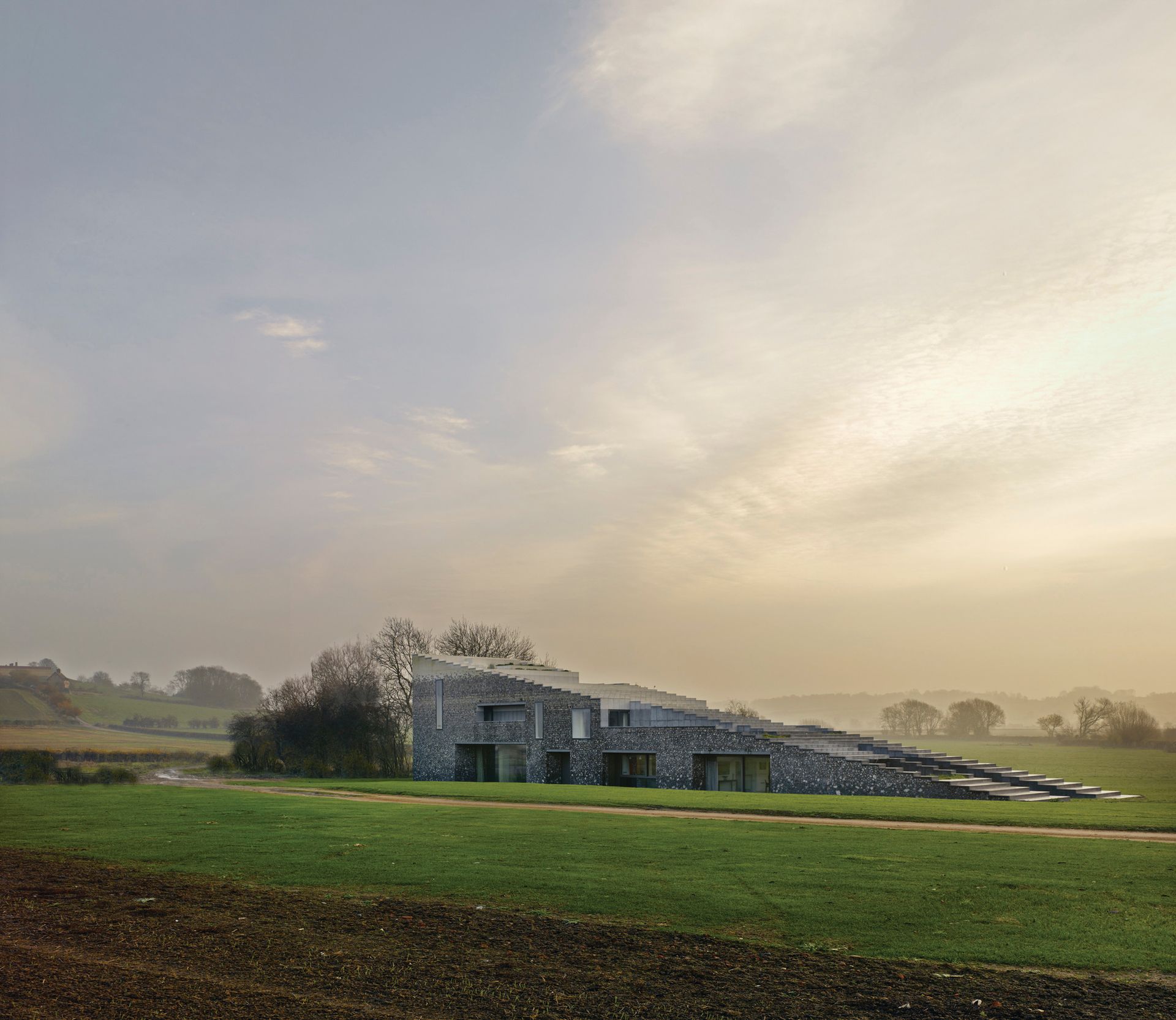The only wunderkammer in Britain, the Waddesdon Bequest, has just been redisplayed in the British Museum by the architects Stanton Williams with funding from the Rothschild Foundation.
As the first chairman of the Heritage Lottery Fund, Jacob, Lord Rothschild (b. 1936), profoundly influenced how English museums manage themselves; he has been the chairman of the trustees of the National Gallery and was directly responsible for getting Somerset House opened to the public. At the same time, he has spent much of his life embellishing and animating a great Rothschild house, Waddesdon Manor, in Buckinghamshire, and here explains why.
The Art Newspaper: What is the first work of art you remember?
Jacob Rothschild: My grandmother Mary Hutchinson gave me a small painting by Simon Bussy of a hummingbird. That was when I was nine and 70 years later I’ve been collecting Bussy ever since, so now I have 76 by him.

Lucian Freud, Man in a Chair (1989), a portrait of Lord Rothschild. The painting has been on loan to the National Portrait Gallery since 1991 © The Lucian Freud Archive; Photograph: bridgemanart.com
Art or nature?
That’s like asking whether you would rather be deaf or dumb. I would find life miserable without both of them. I would probably go for works of art—reluctantly.
You have devoted a lot of yourself to improving the Rothschild legacy. Why?
I inherited responsibility for Waddesdon and a large foundation that gives money to good causes in Israel. There, where we’ve been going for 100 years, we have done an enormous amount in education, in conservation, in Arab co-operation with the Israelis. We have done buildings, the Supreme Court, the National Library, and we support the Israel Museum.
It is difficult to react to the Waddesdon collection because it is so large, but we have added to it. Curiously, the weakest area is French painting, while it’s strongest in furniture and porcelain, so we have added a Chardin, two Paninis celebrating the birth of the dauphin, which read well with the two big Guardis, and several more modern acquisitions, such as two exceptional paintings by Lajoue.
Waddesdon was given to the National Trust and yet you run it—and at a very high level.
We lease it back from them and the house remains populated by a very large number of works of art that belong to my family. Perhaps most important of all, we finance it. They can help us in many ways, but it is independently run and I think they like the way it is going.
It seems to me important that one of [the Rothschild] houses keep going as a monument to my family to be shared with the public
Are you aiming to give a sense of how the house was in its heyday, a period of great luxury such as you never see today in houses of that date—deep carpets, flowers and so on?
The ground floor is pretty much as it was, but with better lighting and conservation, and the whole internet thing for education. The first floor is quite different and is where we show new acquisitions such as the French silver service made for the Elector of Hanover who was to become king of Great Britain [George III]. He had hoped to bring it to England but was attacked by the Prussians, so it was buried. When it was then dug up, part was bought by my French cousins and another part by the tycoon Kerry Packer, who was a friend of mine. He used it once in 16 years when his daughter got married. Then he became ill and sold it to me.
Another notable addition comes from my late cousin Jimmy de Rothschild, who wasn’t very interested in works of art and left France due to the Dreyfus case. He wanted to be reminded of his family and friends in France so he walked down Bond Street and asked the first dealers he came to who should paint them. They said that Léon Bakst was working on The Sleeping Beauty for Diaghilev and might be interested in painting them as characters in the fairy tale. Jimmy left the pictures to the Israel Museum, but I thought they weren’t going to make full use of them, so I asked if I could buy them back. We are constantly buying back family material.

Treasures from the Waddesdon Bequest have been housed since 2015 in a refurbished gallery at the British Museum funded by the Rothschild Foundation. The famous mid-16th-century "Cellini" Bell, second right, was wrongly attributed to Benvenuto Cellini by one of its previous owners, Horace Walpole. Baron Ferdinand de Rothschild, the source of the bequest, rightly attributed the bell to the Nuremberg silversmith Wenzel Jamnitzer Courtesy: British Museum
Why do you do that?
The Rothschild family were in the ghetto in the early 1800s, but 40 years later they had done so well that they could build and buy. They built 44 houses throughout Europe in the 19th century and they were probably the most omnivorous collectors since Emperor Rudolph II [Holy Roman Emperor, 1576-1612].
It seems to me important that one of those houses keep going as a monument to my family to be shared with the public; it is the only one to have a significant number of visitors.
Baron Edmond de Rothschild in France was perhaps the biggest collector of them all. He started when he was eight and bought something nearly every day until he died. He had three children, so a third went to the one who lived at Pregny near Geneva, a third to a Rothschild woman in Zurich who left her Post-Impressionists to the Israel Museum, and a third came here to join Baron Ferdinand de Rothschild’s collection.

Jacob Rothschild at Waddesdon Manor, in Buckinghamshire, with the artist Joana Vasconcelos and one of her Lafite sculptures, 2015 Photo: Mike Fear © The National Trust, Waddesdon Manor
You have now gone into contemporary, with everything from the artist-designed floral parterres to specially commissioned works of art. How does this work?
I think it’s important to do something for your own era. It happens very opportunistically. The latest addition is by Joana Vasconcelos, who did two castles made out of champagne bottles at Versailles that got more visitors than the Koons exhibition. I suggested she do wine castles for us with the 1,200 magnums of Château Lafite, of which we are part owners, and they’re outside the house to replace the quite dull torchères we had before. We’ll keep them there for five years. Inside the house there are pictures by Freud, for whom I sat over three years; my wife was very friendly with Mike Andrews, so there is a portrait of her by him. David Hockney rang me and asked: “Who are you in a relation with? I’m painting people in relationships.” So I said: “With my daughter, Hannah.” So he painted us both.
We have also put up two buildings and we hope to do a third. The first is the archive, Windmill Hill by Stephen Marshall, a youngish Scottish architect. I think it’s very successful and lends itself to having contemporary works of art, so outside in a field we have a great piece by Sarah Lucas of a horse and cart full of melons or testicles. It is atypical for her because it is a blown-up version of a small work that her grandmother had on her dresser. And then we have a cooperation with the ceramic artist Edmund de Waal, who liked working for Waddesdon because of our common Viennese background and we are slightly related. I’m friendly with Anish Kapoor, who did one of his many mirrors, and then there are people whom we admire, such as Beatrice Caracciolo, who did some wonderful photographs that she dips in acid and which come out looking beautiful.
The Flint House, which is by the young architect Charlotte Skene Catling, is inspired by the Villa Malaparte on Capri and has just been named [RIBA] Building of the Year for southern England.
The 19th-century Rothschilds were also known for their good-quality village housing and we want to keep that tradition going with a very good housing scheme in the contemporary style for Waddesdon village.

The RIBA award-winning Flint House on the Rothschild family’s Waddesdon estate, in Buckinghamshire, was designed by Charlotte Skene Catling, and inspired by the Villa Malaparte on Capri © James Morris
How did the Waddesdon Bequest get left to British Museum?
It is the only loss from the house. Nothing has left in 125 years because there were no divorces, no children until I came along, and more and more pieces entering the collection by inheritance, as Rothschilds tended to marry their cousins.
The bequest is the contents of the smoking room, a wunderkammer collection started by Ferdinand’s father, Anselm. Ferdinand didn’t get on with his father so he wasn’t sure about keeping it, although he did add to it. He was made a trustee of the British Museum, and the chairman, Augustus Wollaston Franks, who was a Medievalist, worked on him so that he left the collection in his will on condition that it be kept together in one place—which does raise the question of whether you should agree to such terms, which are more common in the US than in the UK. The then director was not very keen on this arrangement, so the works languished for a while and ended up in a rather weak area on the first floor. I remember Mrs James de Rothschild ringing me up and saying: “I don’t think they’re abiding by the will.” So I spoke to the museum and they put it in a better space, but still on the first floor.
Recently I suggested to the director, Neil MacGregor, that we get a more accessible gallery and have been lucky enough to be given a wonderful room right by the entrance. It’s a great opportunity to show off these works of art with modern lighting and an app. For example, a walnut carved with 100 figures is difficult to enjoy in a case, but an app can let you see it all in detail.
Our dream project now, with the architects Stanton Williams again, is to take the east wing of Waddesdon, which is currently full of kitchens and corridors, and turn it into an exhibition space and a study area, while the commercial side will move down to the stables. But the full development of that area will happen after my lifetime. My objective is to leave Waddesdon in good order, to do some interesting things and enable it to go on doing so.
The next generation?
My son Nat does his own thing and lives abroad; he likes art but is not very interested in this place. My daughter Hannah will carry on. She is now chairwoman of the National Gallery and very interested in works of art. Remember that women have played a huge part; Alice, Jimmy’s wife, was a wonderful owner of Waddesdon and presided over the transfer to the National Trust.
Chris Dercon, the outgoing director of Tate Modern, has said that the art world is so pervaded by economic interests that he fears for its future. Have you noticed a moral deterioration in your lifetime?
Not in the institutions I have been involved with, but I find the contemporary art circus a difficult one. I don’t understand it very well; I don’t have time to go to art fairs, and don’t have time to look. I have a business life, after all, which is what enables me to do these things with Waddesdon. I am a little worried about the commercialism of the contemporary art world, but it is an opportunity to buy Old Masters, which, unless they have great names, are just about affordable.
Do you think the government does not realise that we have such outstanding art institutions, or are the present cuts inevitable because it has to go right across the board?
If I were minister for the arts I would fight very hard to get a bigger allocation. I think the museums deserve it and they need money to be creative with their collections. They can either cut their overheads now, which is very demoralising, or they can fundraise harder. The Americans depend almost exclusively on private funding, but they are much richer, and people who give money can impose conditions, which is something you have to watch out for. Some of the weaker museums may be obliged to introduce admission charges if their budgets go on being cut, although I do hope not.
Is there anything you would like to say about Israeli politics at the moment?
We all know what the difficulties are in the Middle East, both within Israel, with the liberals, the settlers, the orthodox, the non-believers, and outside, with Syria, Islamic State, Gaza, the tumult in Egypt, the Iranian situation and the nuclear problem, the Sunni-Shia unrest. People should be aware of these difficulties facing Israel.

The Holy Thorn Reliquary of Jean duc de Berry, Paris (before 1397); part of the Waddesdon Bequest at the British Museum Photo: © Trustees of the British Museum
The Holy Thorn Reliquary
The Waddesdon Bequest’s greatest treasure is the Holy Thorn Reliquary, writes Anna Somers Cocks. It is a foot high, of solid gold, enamelled and bejewelled, made in Paris nearly 650 years ago for Jean, duc de Berry, to house a thorn believed to be from Christ’s crown of thorns, which was once the property of the Byzantine emperors, then the kings of France. The reliquary ended up in the Habsburg imperial collections. In the 1860s, the dealer to whom it was sent to be restored had a replica made and kept the original, which was eventually bought by Anselm von Rothschild and bequeathed to the British Museum by his son Baron Ferdinand de Rothschild, the builder of Waddesdon Manor.


